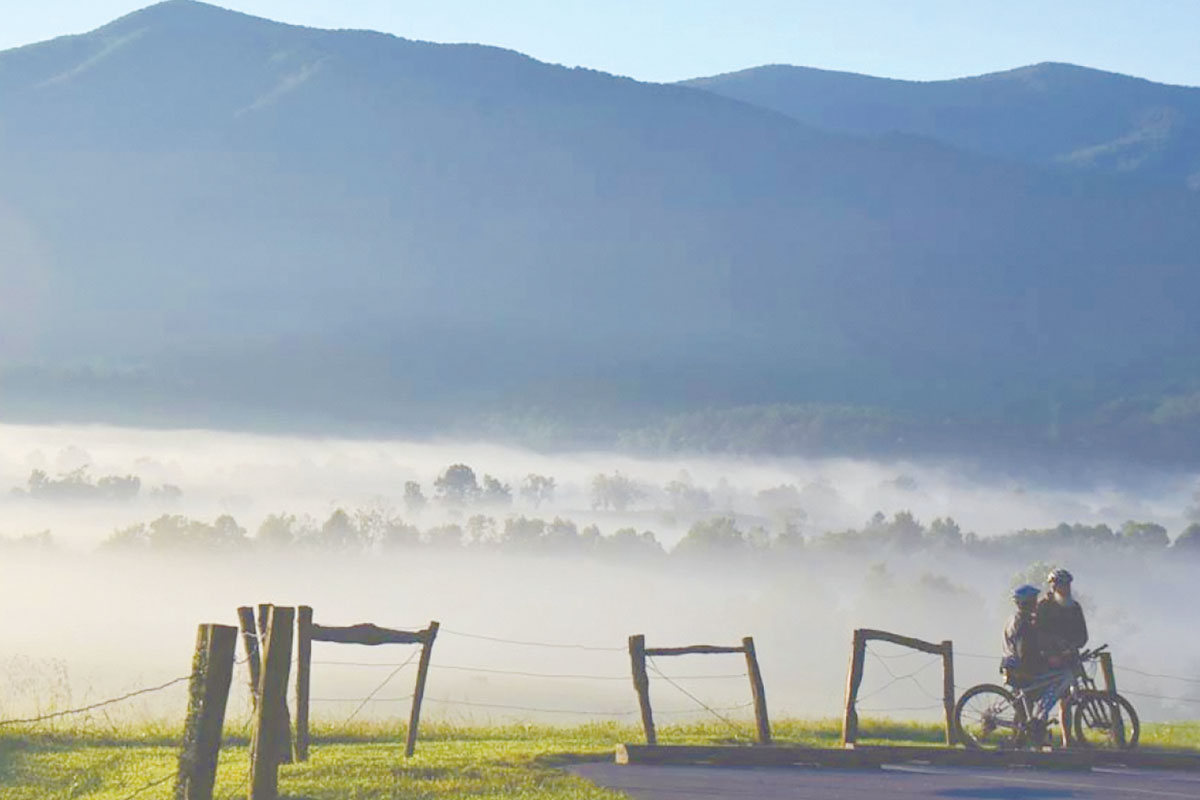Guides serve as ambassadors to visiting performers
 For many teens growing up in Haywood County, becoming a Folkmoot guide is a dream come true. The job means spending two weeks with a group of international dancers and musicians, helping them with everything from getting to performances on time to making trips to Walmart for shopping excursions.
For many teens growing up in Haywood County, becoming a Folkmoot guide is a dream come true. The job means spending two weeks with a group of international dancers and musicians, helping them with everything from getting to performances on time to making trips to Walmart for shopping excursions.
Serbian performers return to Folkmoot
 The Serbian group Talija Art Co., crowd pleasers at the 2009 Folkmoot, will make a return appearance at this year’s folk festival.
The Serbian group Talija Art Co., crowd pleasers at the 2009 Folkmoot, will make a return appearance at this year’s folk festival.
49-year-old murder continues to raise questions, speculation
 Seventy-year old Ronnie Evans, a retired engineer with UNC-TV who lives in Franklin, seems an unlikely homicide investigator.
Seventy-year old Ronnie Evans, a retired engineer with UNC-TV who lives in Franklin, seems an unlikely homicide investigator.
Dynamite rotunda comes to life at Harrah’s Cherokee casino
 Harrah’s Cherokee Casino and Hotel never had an entrance that made visitors stop and say wow — until now.
Harrah’s Cherokee Casino and Hotel never had an entrance that made visitors stop and say wow — until now.
WNC vitality index provides data-driven look at region
A one-of-a-kind database that encompasses virtually every aspect of life in Western North Carolina, from ecology to economics, is now available to decision makers, business leaders and the public.
The Mountain Resources Commission, a group formed in 2009 to study environmental and economic issues facing WNC, recently unveiled the vitality index.
WNC cries foul over air pollution payments going down East
 Western North Carolina for now has dodged concerns that it was getting short shrift in a legal settlement intended to compensate the region for air pollution blowing in from dirty coal plants operated by the Tennessee Valley Authority in neighboring states.
Western North Carolina for now has dodged concerns that it was getting short shrift in a legal settlement intended to compensate the region for air pollution blowing in from dirty coal plants operated by the Tennessee Valley Authority in neighboring states.
Mapping Mountain Treasures: Wilderness on the line
A sweeping review of the Pisgah and Nantahala national forests will get under way in a matter of months, a behemoth, multi-year process that will layout a new blueprint for how the forests are managed for the first time in 20 years.
Environmentalists have been prepping for the forest plan for more than five years already. After all, the fate of 1.1 million acres of public land in the mountains hinges on the vision mapped out in the forest plan.
The changing face of WNC’s national forests
 A million acres of national forests sounds like a lot, and indeed it is. But consider the 8.6 million people who visit the Pisgah and Nantahala national forests every year and those vast green swaths that checker any map of Western North Carolina don’t seem quite so big after all.
A million acres of national forests sounds like a lot, and indeed it is. But consider the 8.6 million people who visit the Pisgah and Nantahala national forests every year and those vast green swaths that checker any map of Western North Carolina don’t seem quite so big after all.
More working poor using food pantries to get by
A clean-cut looking Perry Matthews walked into the food pantry with a smile on his face. He wore a crisp, light blue, long sleeve button-up and tan slacks. His long, dark hair was pulled into a neat ponytail.
It is easy to mistake him for one of the volunteers who prepares meals or packs boxes with food. But Matthews, a 26-year-old employed chef and cooking teacher, is part of a new demographic of working poor in Western North Carolina.
Six months ago after finding himself struggling, Matthews started picking up food boxes from The Community Table in Sylva.
“Times got hard, and it’s everything I can do to get my rent and bills together,” Matthews said. “The electric bill was taking up way too much.”
For Matthews, meals have become a regular community event. His neighbors also frequent the Community Table for donations. Then they pool their food and cook meals that they all share together.
Matthews is not embarrassed to admit he needs help and suggests that others who are scrambling to pay their bills visit the pantry as well.
“You’re hungry, and they’re giving food. It’s plain and simple,” said Matthews, who is one of 17.7 percent of Jackson residents who in 2011 did not have continuous access to food.
Some first-time visitors are ashamed to come to a food pantry because of the stigma associated with it.
“Poverty has such a stigma, and a lot of people have the ‘blame the victim’ mentality,” said Amy Grimes, director of the Community Table. “There are so many factors beyond people’s control.”
So, the Community Table tries to create a happy, community atmosphere, where people can sit and socialize while waiting for food or collecting their food boxes.
“(People) probably think it’s a sad, downtrodden kind of place. No,” Grimes said. “It’s much more dignified.”
The new visitors are not part of the generational poverty cycle but rather lost their job or face unexpected costs.
“We are seeing a lot more situational poverty,” Grimes said. “People have a medical issue come up, and it turns their entire life upside down.”
Although many people enjoy the three-month summer that a job at a school affords, Martina Maldonado would rather work. Every year when Western Carolina University’s campus essentially closes down, Maldonado, a cook at the college, is unemployed and must used food pantries to compensate for the lack of income.
“Any holiday they close, it happens,” said Maldonado, a Spanish woman whose daughter-in-law translates for her.
Their number one customer, however, is still elderly people and mentally challenged individuals, who are usually both on fixed incomes.
The Community Table used to grow busier toward the end of the month when people’s food stamps ran out but now stays busy throughout since the federal government began staggering its food stamp release. Some people get food stamps at the beginning of the month, and others receive them in the middle or end of the month.
“We are just busy all the time now,” Grimes said.
Food shortages persist in the land of plenty
Counties in Western North Carolina have seen dramatic increases in the number of people who need food assistance — either from the government in the form of welfare or from local food pantries.
The number of people on food stamps in Haywood, Macon and Swain counties has increased by more than 40 percent over the past four years.
Foods stamps only go so far, however, so churches, charities and community groups have stepped up to the plate to help feed the hungry.
MANNA food bank serves as the region’s major clearinghouse for food for more than 250 food pantries across Western North Carolina. MANNA collects food and money and distributes it among its member pantries, and as a collective, the pantries have an easier time obtaining government funding.
“It’s a great program,” said Alice Fisher, a board member of another food pantry, The Community Kitchen in Canton. “We couldn’t continue if we didn’t have that support from MANNA.”
The Community Kitchen started in the mid-2000s, and leaders decided to serve dinner since the Open Door Soup Kitchen in Waynesville already offered breakfast and lunch. The pantry also hoped to fill a niche in Canton since Waynesville can be a far daily trek for people without a car or even those on a tight budget, said Beverly Brock, director of The Community Kitchen.
“Waynesville has a soup kitchen, and it’s a good one, but it’s quite a bit of gas to get a meal,” Brock said.
The Community Kitchen sees pretty much every demographic flow in and out of its home on Pisgah Drive.
“It’s the whole gamut — we’ve got elderly, we’ve got disabled, we’ve got multiple generations in one household,” Brock said, adding that they also see grandparents trying to raise their grandchildren on fixed incomes.
And, the number of people they see each week depends on what is happening in an individual’s life.
“It flows with how their bills go this week. Every hiccup can make a big impact,” Brock said. “What we do is just help sustain them.”
The pantry typically goes through 5,000 pounds of food each month, which is about one-third more business than The Community Kitchen did in year’s past.
MANNA as a whole distributed almost 10 million pounds of food last year and still does not meet demand, said Alissa Hixson, a spokeswoman for MANNA food bank.
“As soon as the economy went under, everything changed,” said Amy Grimes, director of the Community Table in Sylva.
The Community Table, which typically made 25 to 40 meals each weekday, now makes 80 to 100. The pantry is closed Saturday and Sundays.
“The need is going up like crazy,” Grimes said. “We are seeing new people every week.”
Pantries are seeing more families come for food, though some college-educated individuals are also visiting the food pantries.
Feeding children
At least 30 percent of the children in Western North Carolina don’t have adequate access to food, according to MANNA food bank. The MANNA backpack program helps to ease that burden by delivering 5-pound bags of food to schools on Fridays and sending them home with children in needy families.
“Those families are struggling over the weekend because the kids do not have a free meal at school,” said Emily Paris, program services coordinator at MANNA.
It serves 3,800 children a week during the school year. But, it’s not nearly enough to meet the needs of all the hungry kids.
Although MANNA does its own fundraising for the program, the Waynesville Rotary Club has decided to make the backpack program its pet project year-round, collecting donations that will go to children in Haywood County in hopes of expanding the program. The Rotary club is accepting checks, but people can also donate by tacking a nominal amount onto their bill when eating at Waynesville restaurants.
As of last week, the club had raised more than $20,000 — all of which will stay in Haywood County, emphasized Brandon Anderson, president of the Waynesville Rotary Club.
“We are excited,” Anderson said. “I am pretty confident that it is going to explode from there.”
Food insecurity rates
Haywood: 16 percent
Macon: 16.9 percent
Jackson: 17.7 percent
Swain: 19.9 percent
Data for 2011, provided by MANNA foodbank
How to help
Giving to MANNA food bank or an individual pantry is simple. Call or stop-by or simply mail in a check or ask to volunteer. Check out www.mannafoodbank.org for specific information about food pantries and soup kitchens in your area.
Other ways to give include:
• The Community Kitchen in Canton is hosting a golf fund-raiser at Lake Junaluska at noon on June 1. Teams are four-person, captain’s choice. Entry fees are $50 per person. 828.593.9319.
• The Open Door Ministries is hosting a Bike Run will begin at 11 a.m. Saturday, June 9. The fund-raiser, hosted by The Carolina Faith Riders, will raise awareness and money for the soup kitchen and thrift store in Waynesville. Registration is from 9-10:45 a.m. There is a $15 per bike entry fee. The route will be from The Open Door, through downtown Waynesville to N.C. 276, across the Blue Ridge Parkway, down Soco, through Maggie. The Bike Run will conclude at Dellwood Baptist Church at 12:30 p.m. with music on the lawn and a lunch. 828.926.3846.
• The last Wednesday of each month from 11 a.m. to 2 p.m., the Community Table hosts a blue plate special fund-raiser. A local restaurant donates lunch, which the pantry offers for a minimum $5 donation. Call ahead for a takeout order, or eat at the pantry. 828.586.6782.
• From June 15-July 15, businesses and organizations in Haywood County will be accepting food that will then be directly distributed to food pantries and soup kitchens throughout the county. The goal is to collect 50,000 pounds of food. Look for red donation barrels outside businesses or call the Chamber of Commerce for a list of locations. Those wishing to make a monetary donation should stop by any Haywood County BB&T. 828.456.3021.
• The Dillsboro River Company will offer free rafts for unguided trips down the Tuckasegee River from 10 a.m. to 3 p.m. June 3 in exchange for10 cans of food per person that will be donated to United Christian Ministries of Jackson County. 866.586.3797.
• Duckett’s Produce in Maggie Valley is collecting food donations. The donations are then taken to the Maggie Valley Methodist Church where those in need are free to pick up food.






















